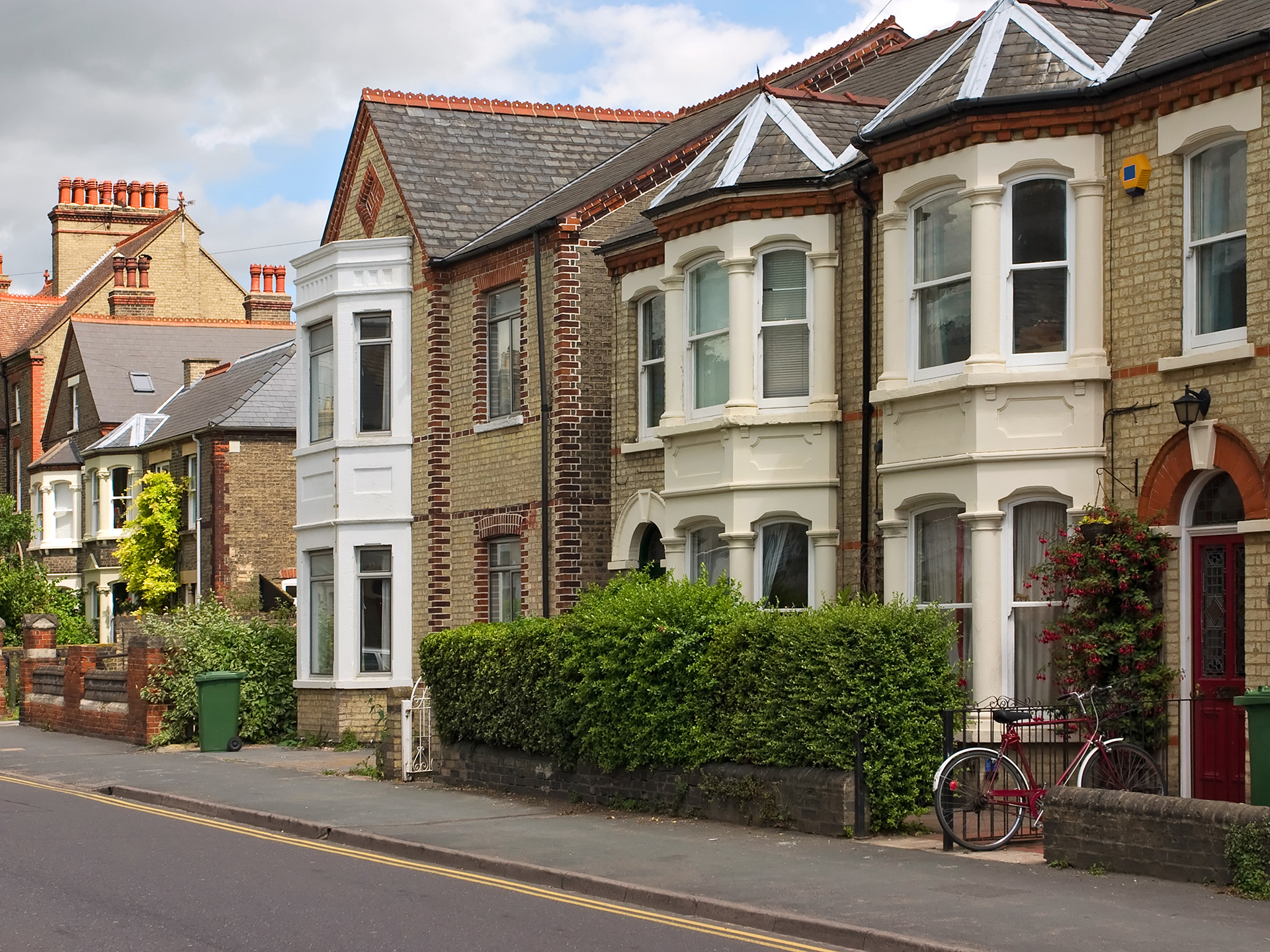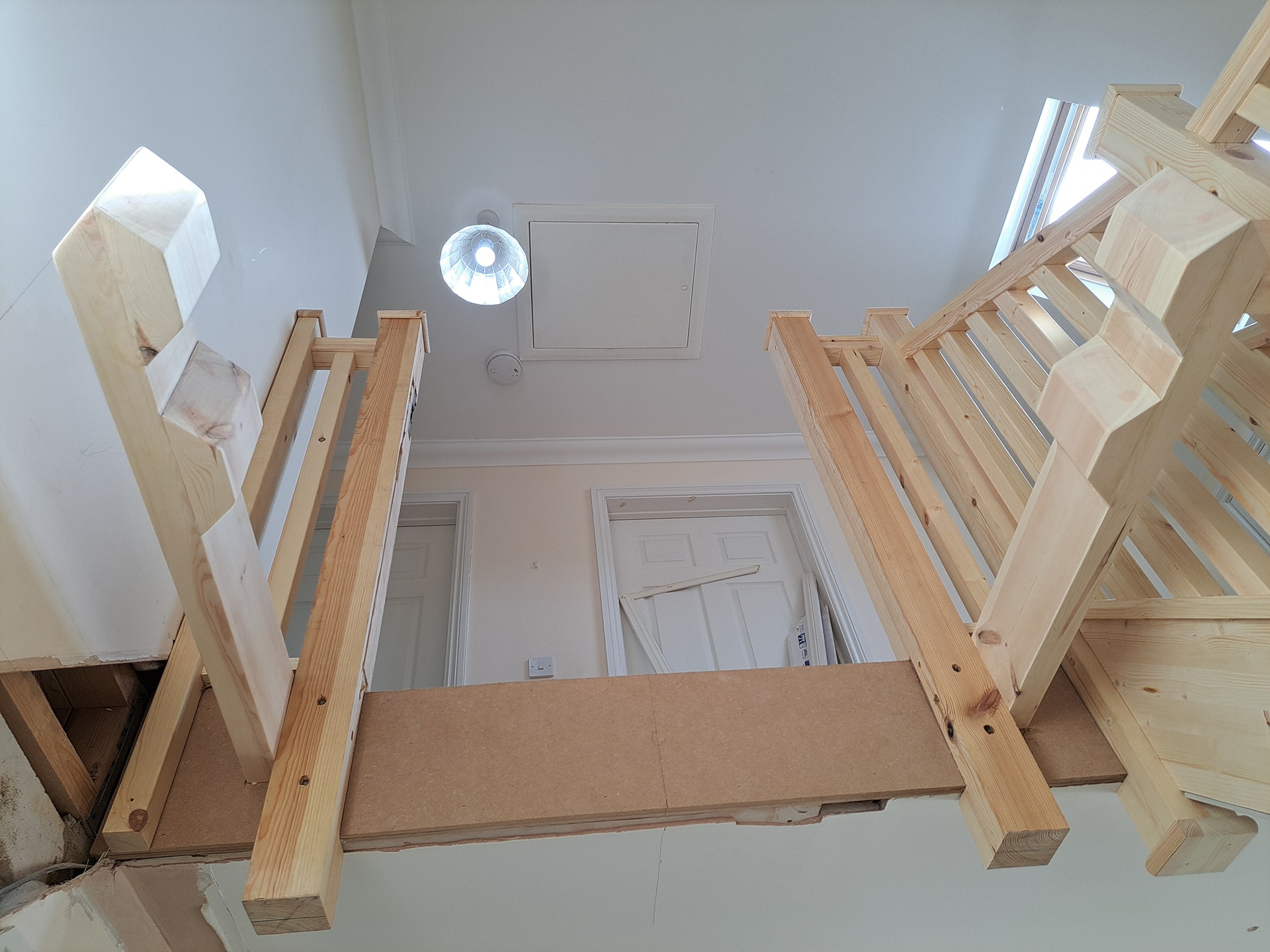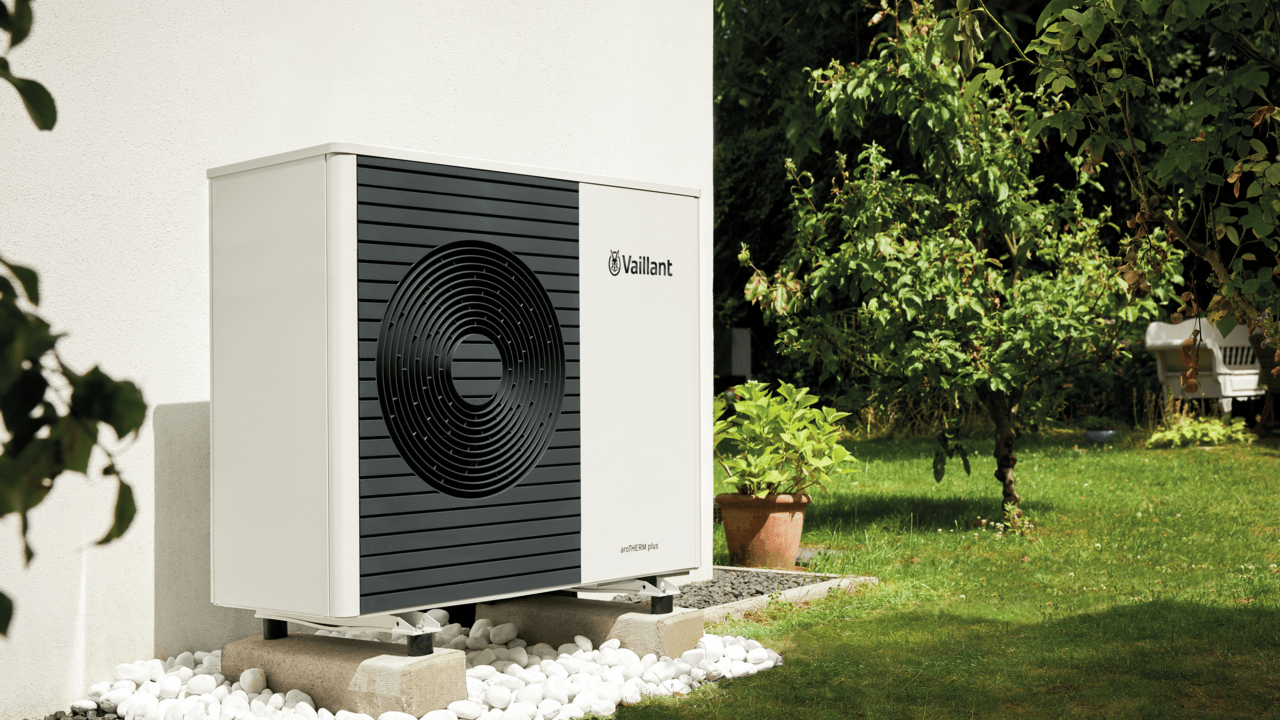19 ways to boost the energy efficiency of your home – whatever your budget
Top expert shares the cost of decarbonising home improvements – and which ones are worthwhile
No matter what budget you’ve got, nor the age or design of your home, there’s always something you can do to improve its energy efficiency.
We talked to Simon Bones, founder of ’intelligent retrofit’ specialists Genous, to get advice on green home improvements to suit every pocket.
Genous CEO Simon has advised numerous homeowners on the right sustainable improvements for their homes.
He’s also a visiting research fellow in climate-change science at Bristol University, so understands the importance of saving carbon as well as energy costs.
Simon’s top tip: “Different types of insulation are suited to different types of building.
If you’re not sure whether your home has suspended floors, say, or cavity walls, looking at your home’s energy performance certificate (EPC) is a good way to find out. Your home will have an EPC if it has been sold in the last 10 years.”
You can find current EPCs on the online EPC register here.
The costs given below are approximate for an average family house, but obviously will vary according to the size, design and condition of your home.
1. Draughtproofing
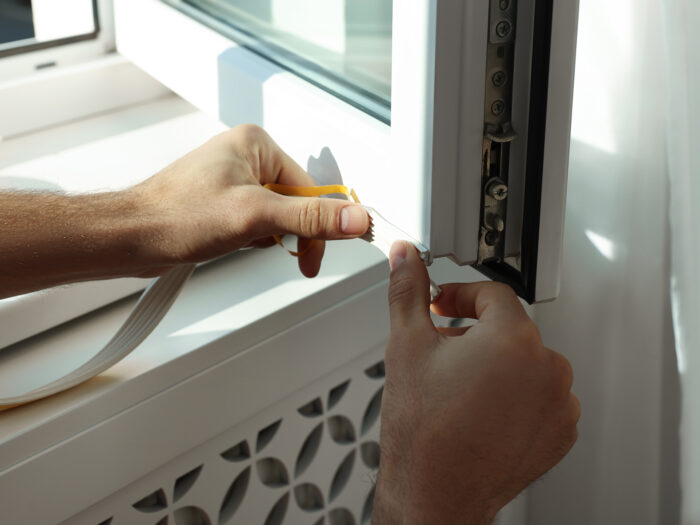
Image credit: Adobe Stock
Cost: £50+ for DIY depending on what you do
What’s involved: Windows and doors are easy DIY draught-proofing jobs.
For external doors, there are various options to consider including: draught-proofing self-adhesive tape round the door; a draught-proofing brush across the bottom, an escutcheon over the keyhole, a letterbox flap, and a draught excluder to put across the foot of door in the winter.
For windows, you can use special self-adhesive tape or brush strips.
The former is cheaper but won’t necessarily last very long. It’s also worth checking if your windows need re-caulking.
For sash windows, think about window film or window insulation kits, but that’s a job for autumn as some kits mean you can’t open the window.
Simon’s top tip: “If you’re getting new curtains, think about choosing thicker, heavier ones that will keep out draughts in winter, particularly if you have single glazing.”
2. Other DIY hacks
Cost: £50+
What’s involved: There are lots more small, cheap DIY jobs you can do to improve your home’s energy efficiency.
For example, chimney balloons will reduce heat loss up chimneys, a hot-water cylinder jacket will reduce heat loss, and low-energy lighting upgrades will reduce your energy use for lighting.
These are all well worth considering given the low outlay involved.
Simon’s top tip: “Don’t use a chimney balloon if there’s any possibility the fireplace might be used.
“Also it’s not a good idea to use them with artificial fires (eg gas fires) because of the potential carbon monoxide risk. So always read the product information and use with care.”
3. Heating controls
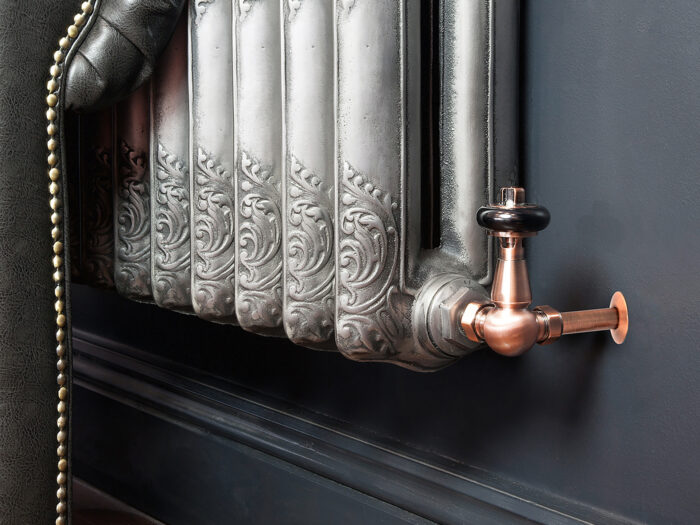
Image credit: The Radiator Centre
Cost: £200-£1,000 for ‘dumb’ controls
£200-£2,000 for smart controls
What’s involved: Installing controls that let you adjust the temperature in different parts of the house separately will save energy and money.
‘Dumb’ solutions such as thermostatic radiator valves (TRVs) and thermostats let you control things manually, while smart systems let you control your whole heating system zonally from a central app or controller.
Some smart systems need you to install wireless TRVs.
In other systems the heating is controlled centrally using even ‘smarter’ controllers.
Simon’s top tip: “Basic heating-control systems are often cheaper if you get them installed as part of a broader plumbing/boiler upgrade or do several things at once when you have the plumber out.”
4. Hot-water power diverter
Cost: £1,000, when installed at the same time as a heat pump or solar panels
What’s involved: A hot-water power diverter lets you use surplus solar power to heat your hot water.
This kit is most useful in combination with a heat pump and large solar array, to enable you to switch off the heat pump in the summer.
Simon’s top tip: “A power diverter is of limited or no economic benefit with an efficient gas or oil boiler if you have a good export tariff, but can be useful in some situations if you have a heat-pump.”
5. Loft insulation
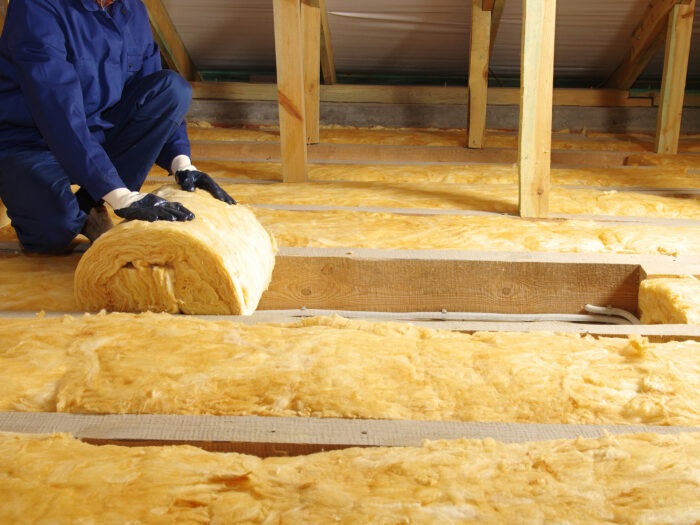
Image credit: Adobe Stock
Cost: £1,500 or less if you do it yourself
What’s involved: Adding new insulation or topping up existing loft insulation can be done at the level of the joists (horizontal beams in the roof) or rafters (the sloping beams that support the roof).
A variety of types of batt or blanket insulation – including recycled glass, hemp, or sheep’s wool can be installed quite easily yourself between the joists. Or insulation boards can be fixed between the rafters.
Simon’s top tip, “You’ll get some benefit from topping up existing insulation, but proportionally a lot less than from the initial installation.
“If you do yourself, make sure you don’t block up ventilation where that’s needed”
6. EV charger

Image credit: Tesla
Cost: £1,500
What’s involved: An EV charger lets you charge electric vehicles using your home’s power supply, which is much cheaper than the power from public charging stations.
You’ll need off-road parking space to use an EV charger because it’s far from ideal to have to run a cable to your car across the pavement every time you want to charge your car.
New in-pavement solutions, like gulleys, which would allow you to safely run a cable from your home to a car parked on the street, are in development, and will make EVs more attractive to people who don’t have off-street parking.
Simon’s top tip: “Some EV chargers can be set up to use surplus solar power from your solar panels and some utility tariffs require specific models so, if those are things you’re after, do check the spec of any model you’re looking to buy because not all of them have that functionality.”
7. Cavity-wall insulation
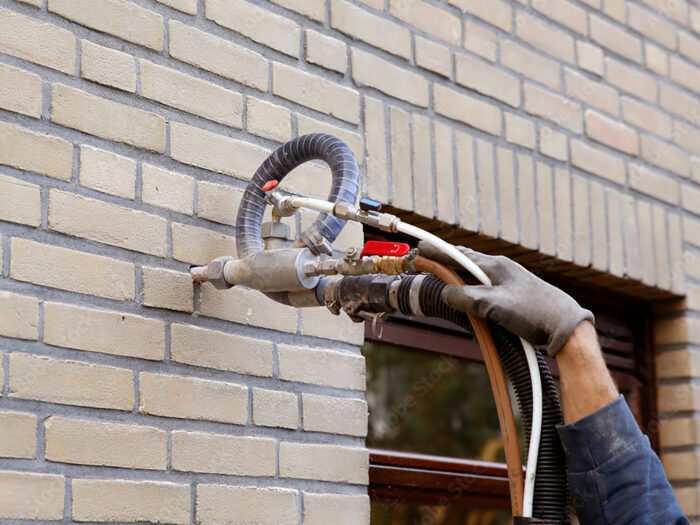
Image credit: Adobe Stock
Cost: £2,500
What’s involved: Injecting insulation into existing wall cavities means less heat is lost through the walls.
Older properties don’t generally have cavity walls – ie walls made of two blockwork/brick skins with a space in between – but those built since the 1930s are likely to.
Meanwhile, by today’s standards, any house built before the 1990s was likely built without what we would now regard as sufficient insulation.
Different types of insulation are available – eg blown mineral wool fibre, polystyrene balls, and foam – in general, bead insulation is a tiny bit more expensive but tends to be the lowest risk, but take advice from an expert who isn’t commercially biased towards one kind.
Simon’s top tip: “Cavity-wall insulation might not be suitable if your property has damp, cracks in the walls, blown mortar, is exposed to frequent driving rain, or has poor wall cavities – but if not, it gives a really good return.”
8. Smart airbricks
Cost: <£1,000
What’s involved: Smart airbricks are vented bricks that are inserted into the outside walls of your property to replace the traditional airbricks.
They have sensors that detect humidity and temperature inside and outside the house, and a wireless connection to their own hub, which plugs into the household router.
The vents open to allow humidity out of the house when necessary, then shut again automatically.
Simon’s top tip: “Smart airbricks can provide about half the benefit of standard floor insulation for a lower cost and without needing to take up the floor or get underneath it.”
9. Floor insulation

Image credit; Adobe Stock
Cost: £2-4,000 plus the cost of taking the floor up and putting it back
What’s involved: Insulation can be installed under suspended floors while solid floors can be built up or replaced.
Insulating suspended wooden floors involves a lot of work unless you can access them from below.
You typically need to take up the floorboards.
Then insulation in the form of mineral wool or wood fibre is suspended between the joists within a breathable membrane and vapour control layer.
Finally, the floorboards are replaced.
Alternatively, insulation board can be used and cut to shape to fill the gaps between the joists.
Either way, it’s a fiddly, involved job that’s normally best done by experts.
Simon’s top tip: “Insulation options for suspended floors are easiest if you’re reflooring anyway, unless you can access the underside of the floor, for example, from an unheated cellar.
“Insulating solid floors is more difficult than suspended floors – and, it’s worth bearing in mind that less heat goes out down through most floors than people think.”
10. Home battery
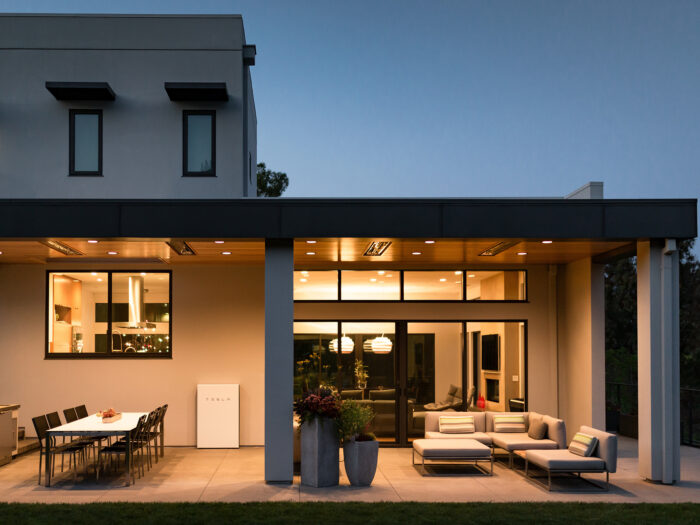
Image credit: Tesla
Cost: £3,000 (depending on size) when installed at the same time as solar panels
What’s involved: Home batteries allow excess energy generated by solar panels to be stored within the home rather than exported to the grid. Also, even if you don’t have solar panels, you could use one to help you optimise savings from time-of-use energy tariffs, though the returns here depend on the tariff and your electricity usage.
Simon’s top tip “These batteries can normally only store a day or so’s worth of power, so don’t let you shift load from week to week or season to season.
“However, they can shift load within the day and help manage peak times and excess solar production across the day.”
11. New boiler
Cost: £3,000
What’s involved: Replacing your boiler with a new high-efficiency boiler.
Simon’s top tip: “There’s been little progress in boiler efficiency in recent years, so you’d need to be replacing a pretty old boiler to see much benefit.
“Plus, a new boiler locks you in to using fossil fuels for a long time to come, so a heat pump may be a better option if your current boiler is dying.”
12. Performance glazing
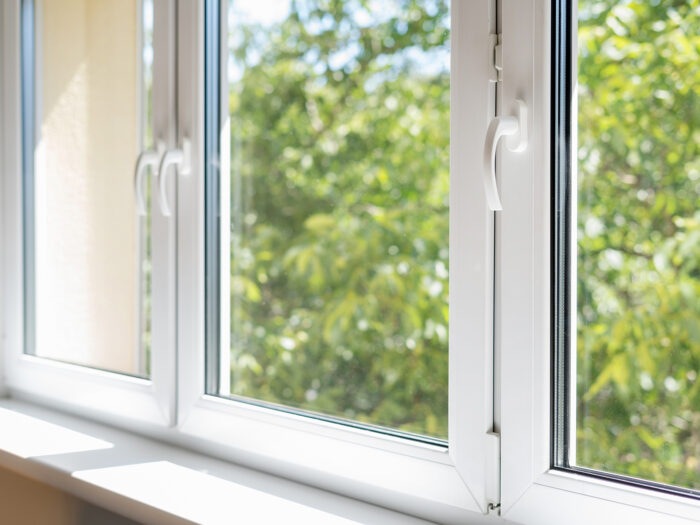
Image credit: Adobe Stock
Cost: £5,000+
What’s involved: Replacing your old windows with new double or triple-glazed windows that are much more thermally efficient.
Simon’s top tip: “Costs vary a great deal depending on the materials you choose, whether your windows are standard or bespoke, and what type of windows you go for.
“The cost savings aren’t huge but nice windows can impact the value and liveability of the property, too.”
13. Underfloor heating
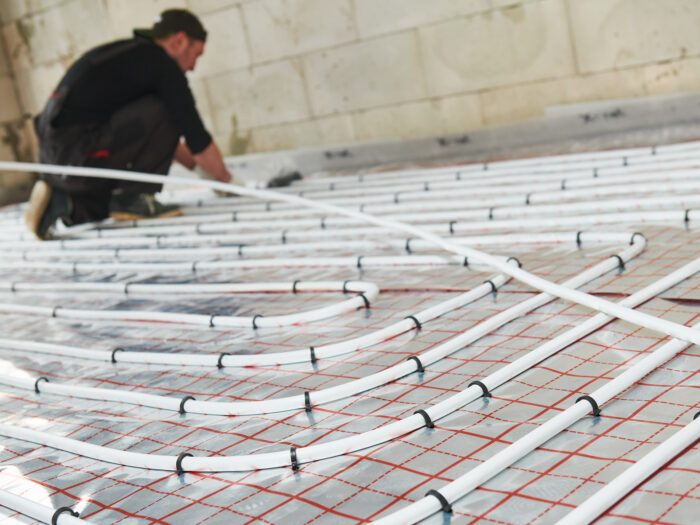
Image credit: Adobe Stock
Cost: £5,000 for ground floor only
What’s involved: ‘Wet’ underfloor heating systems run hot water through a network of pipes set into the floor instead of through radiators.
There are electric underfloor heating systems too, but these are typically only used in small spaces, and they cost a lot more to run, though they’re cheaper to install.
Simon’s top tip: “Underfloor heating works really well with heat pumps because it works at a lower flow temperature than radiators, which means your heat pump can run more efficiently, saving you more money.”
14 Solar (photovoltaic) panels
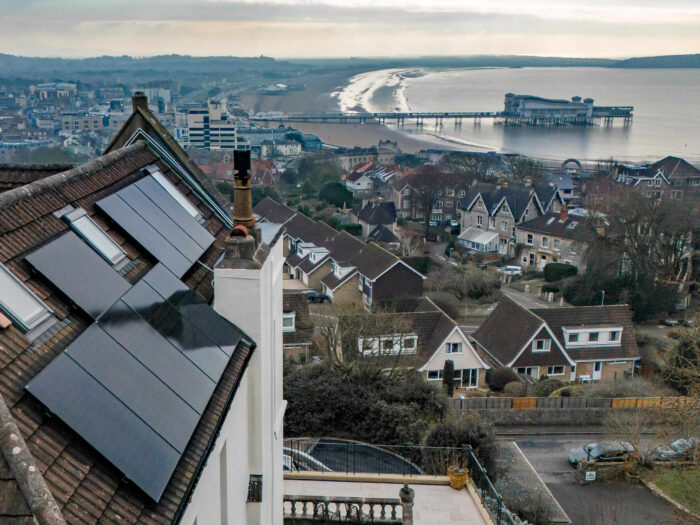
Image credit: Genous
Cost: £6,000
What’s involved: Electric PV panels, typically mounted on the roof, let you generate electricity from sunlight.
You need roof space – or another large space – to mount the panels, so solar isn’t usually an option for flats, except on the top floor.
PV doesn’t generate as much power during the winter when there is less sunlight but will still produce energy year-round and tends to be a better payback than solar thermal (used for heating hot water) in most properties.
Simon’s top tip: “It’s getting easier to get permission to install PV arrays even on listed buildings and in conservation areas, though these are still often more tricky than, say, heat pumps.”
15. Air-source heat pump
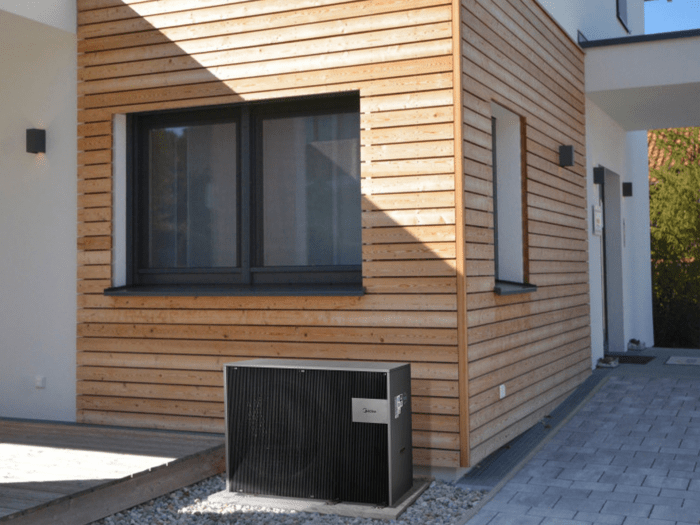
Image credit: Midea heat pump Quiet Mark certified
Cost: £5,000+ on top of government grant
What’s involved: An air-source heat pump consists of two parts connected by pipework: an external fan unit that pulls energy from the outside air – no matter what the outdoor temperature – and an internal cylinder, which it connects to for your hot water. Check out our air-source heat pump buyer’s guide here.
Because you need space for the outdoor unit, some properties such as upper-floor flats or other buildings without suitable outdoor space might not be suited to air-source heat pumps. (Mounting the outside unit off the ground can work in some situations, it just needs to be accessible for maintenance.)
A heat-pump-powered heating system also needs a hot-water cylinder or equivalent (there are smaller options now), which can make it a harder and more expensive job if you’re replacing a combi boiler and don’t have an obvious place to put the cylinder.
Simon’s top tip: “Heat-pump systems vary widely in cost depending on the size of your house, how well insulated it is and how efficient and quiet the heat pump is.
“To keep your bills down, you’ll need to go for a high-quality unit and get it installed well. You might need some radiator upgrades too so that you can set up your heating system to operate at a low flow temperature.”
16 Loft room insulation
Cost: £8,000+
What’s involved: Installing insulation behind the stud walls, ceilings etc in a loft conversion.
Simon’s top tip: “Insulating a loft conversion tends to be much more expensive than insulating an unconverted loft, and access issues may make the process difficult or even impossible, but it can make a big difference if the loft rooms are cold and poorly insulated.”
17 Internal wall insulation
Cost: £10,000+
What’s involved: If you don’t have cavity walls, one option for reducing heat loss through your walls is internal wall insulation.
This involves removing plaster, adding insulation then replastering the inside of your external walls.
Alternatively, insulation can just be added on top of the walls.
It’s a job for professionals and you need be careful not to trap moisture within the fabric of the building.
Plug sockets, skirting boards, picture rails etc will all need to be removed and then replaced once the insulation is in place.
You’ll also need to redecorate. All of which means it tends to be done most commonly as part of a full renovation.
Simon’s top tip:” You’ll need to use specialist materials in older buildings and be careful to avoid thermal bridging.
“You’ll likely end up with slightly smaller rooms, too, unless you’re stripping right back.
“The cheapest and best time to do this kind of work is when you have a builder in doing other work.”
18. Ground-source heat pump

Image credit: NIBE
Cost: £20,000 on top of government grant
What’s involved: Ground-source heat pumps work in the same way as air-source pumps, but they extract energy from the ground rather than the air.
You can find out more in our ground-source heat pump buyers’ guide.
Typically, they are much more expensive than air-source because of the groundworks required to install the heat collector.
The heat collector will be hidden underground so there will be no visible outdoor unit.
If you live near a suitable body of water, another option is a water-source heat pump.
Simon’s top tip, “In the past, ground-source heat pumps were much more efficient than air-source ones, but today the difference in performance is much smaller so the extra cost makes them something of a niche purchase.”
19. External wall insulation
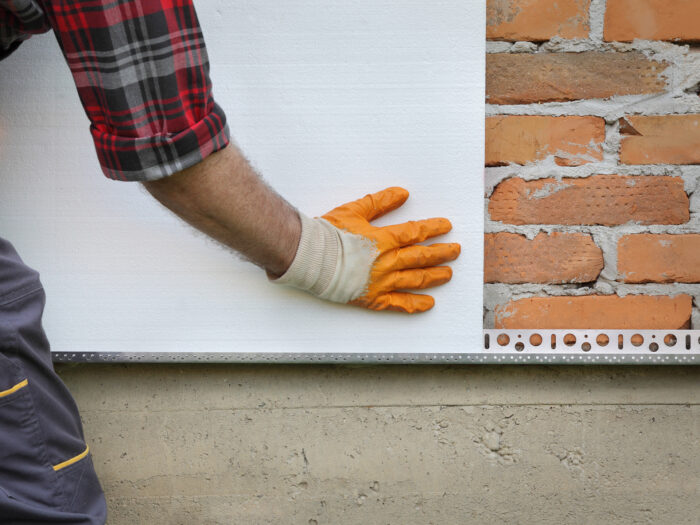
Image credit: Adobe stock
Cost: £20,000+
What’s involved: Another insulation option for non-cavity walls is external insulation fixed to the outside of the property.
A layer of insulation material is fixed to the outside of your property walls, then covered in render, cladding or tiles.
This is an expensive job and can have a significant impact on the appearance of the house.
Simon’s top tip: “Usually, external insulation won’t be permitted for listed buildings or in conservation areas.”
Combined effects
Simon says, “Many of these energy-saving features work more effectively in combination, so, if you can afford it, it makes sense to talk to a specialist who can give you across-the-board advice and draw up a comprehensive green-upgrade plan for your home, rather than doing the work piecemeal.”
Simon and his team of experts can be contacted at Genous.
READ MORE:

